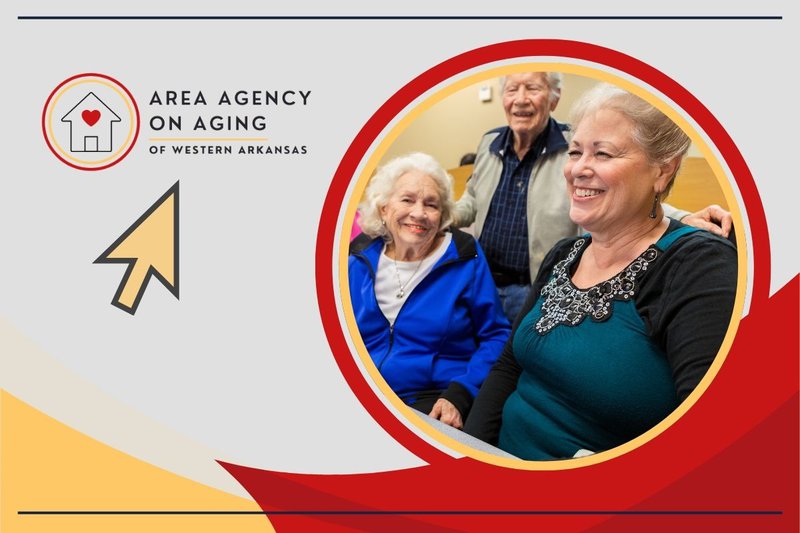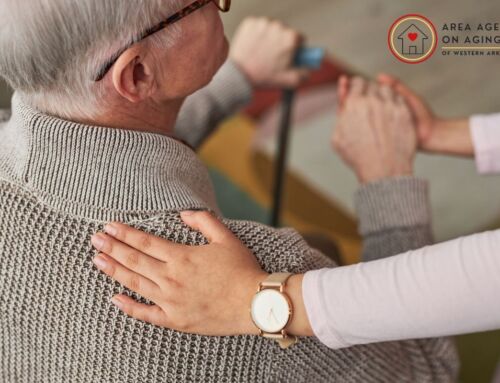Caring for an aging loved one is hard, but technology for seniors can help in real ways. From phones that are easy to use, to smart home tools that prevent falls, today’s devices can help seniors stay safe, connected, and more independent. We’ll go over the latest advances in accessible tech, and show you what works and why. You’ll find tools that make life easier for them and for you. Let’s make “aging in place” feel less stressful.
Key Takeaways:
- Top Assistive Devices: Medical alert systems, fall detectors, GrandPad tablet, smart speakers (Alexa/Google), automatic pill dispensers.
- Mobility Aids: Tango Belt with airbags, GPS-enabled wearables, smart sensors, high-tech walkers.
- Senior-Friendly Devices: Jitterbug Smart3 and GrandPad—large icons, loud sound, simplified interfaces.
- Accessibility Tools: Large-print keyboards, one-click mice, screen readers, voice controls.
- Smart Home Tech: Smart speakers, sensors, video doorbells, and pill dispensers—easy to install.
- Wearables: Fitbit, Apple Watch, VitalBand—track vitals, activity, sleep, fall alerts.
- Training Resources: AARP TEK, Senior Planet, GCFLearnFree, Skillful Senior—free tech lessons.
- Barriers: Vision loss, arthritis, fear, cost, and limited exposure hinder adoption.
- Overcoming Barriers: Hands-on teaching, simplified devices, trusted support, and financial aid programs.
- Gifts for Seniors: GrandPad, KOMP, Hero pillbox, Joy For All pets, Echo Show.
- Remote Care Tools: Fall detection, daily habit tracking, memory reminders, emergency alerts.

How Technology for Seniors Is Changing Independent Living
Today’s aging adults are living longer, healthier lives—and many want to stay in their homes as they age. To support this goal, technology for seniors is stepping in to offer tools that promote safety, independence, and connection. From smart speakers to wearable medical devices, the world of senior-focused technology is growing fast. The key is finding what fits your needs, is easy to use, and truly makes daily life easier.
Assistive Devices Offer Safety and Simplicity at Home
One of the first ways technology supports seniors is through assistive devices. Notably, these devices help with safety and communication. Moreover, these tools don’t require tech experience and are often ready to use right out of the box.
Medical alert systems allow seniors to get help with the push of a button. For example, some, like the LifeStation Sidekick, include GPS and fall detection, so help arrives even if the person can’t press anything. Additionally, smart speakers like Alexa and Google Assistant respond to voice commands and can control lights, make phone calls, or even read books out loud. Furthermore, automatic pill dispensers like the Hero remind users to take their medications and notify caregivers if they miss a dose.
Overall, these tools are designed with seniors in mind and can be life-changing for those who want to stay home with confidence.
Mobility Tools and Fall Prevention Technology for Seniors Add Peace of Mind
Falls are a major concern as people age, but technology for seniors has introduced several tools to help prevent them. For example, the Tango Belt is worn around the waist and inflates airbags if a fall is detected, offering protection and alerting family members immediately.
Smart outlets with sensors monitor daily movement and detect unusual patterns, like not getting out of bed. These tools notify caregivers without using cameras. Walkers and motorized chairs now come with embedded GPS and communication tools, so seniors can call for help or be located quickly. These innovations promote both safety and freedom.
Simplified Tablets and Phones Make Daily Life Easier
Technology doesn't have to be complicated. Devices like the GrandPad tablet and Jitterbug Smart3 smartphone are specially designed for older adults. These devices feature large icons, loud audio, and clean menus, ensuring no pop-ups or confusing alerts. Consequently, seniors can navigate these tools with ease and confidence.
The GrandPad connects to the internet without Wi-Fi and only allows calls and messages from trusted contacts. It also handles video calls, music, games, weather, and more. The Jitterbug has emergency buttons and direct access to nurses or support staff. Consequently, these tools make staying in touch with family and managing daily tasks much simpler.
If you’re unsure where to begin, starting with a simplified device like the GrandPad can be a great first step.
Computers and Tablets Can Be Senior-Friendly with the Right Settings
A good technology setup for seniors starts with ease of use. To begin with, touch screens with large buttons and voice control offer great alternatives to mouse-and-keyboard setups. Furthermore, Windows and Mac computers include accessibility settings like screen readers, magnifiers, and voice control options. Consequently, these adjustments make technology more accessible and user-friendly for seniors.
Tablets like the GrandPad cater to seniors, while Chromebooks also serve as excellent options for basic use. They are fast, affordable, and automatically update. Look for models with 14-inch screens and clear displays from brands like HP, ASUS, or Lenovo.
Accessories Improve Comfort for Seniors with Vision or Mobility Challenges
For older adults with low vision or hand coordination issues, simple accessories can make a big difference. Large-print keyboards with backlighting—like the AbleNet BigKeys—make typing easier. Trackball mice, such as the Logitech ERGO M575, require less movement and are great for shaky hands.
Styluses like CozyPen give better control on touch screens. Built-in tools such as NVDA for Windows or VoiceOver for Apple devices can read aloud text or menus. These features help seniors stay connected and productive without frustration.
For more product suggestions, SeniorLiving.org offers a helpful guide to senior-friendly gadgets and accessories.
Smart Home Technology for Seniors Supports Independence and Comfort
Smart home devices are making aging in place not only possible but also more comfortable and secure. These tools are easy to install and work quietly in the background to support daily routines.
Smart speakers like Alexa or Google Assistant can perform tasks with just your voice, such as setting reminders, answering questions, or playing music.
Smart sensors, for instance, monitor movement around the house and can notify caregivers if something seems off. Additionally, video doorbells let you see who’s at the door without having to get up. Furthermore, smart pillboxes can blink, buzz, and even message a family member if a dose is missed.
Most of these devices, generally, cost between $50 and $300 and are easy to plug in and set up. As a result, some seniors start with one device—like a speaker—and subsequently add more over time as their needs evolve.
Caregivers Benefit from Technology That Adds Safety and Convenience
Caregivers can also benefit from technology for seniors. Devices that track activity or alert them to missed medication reduce the need for constant check-ins and improve peace of mind.
If someone hasn’t moved in a while, smart sensors send alerts. Fall detectors or emergency buttons offer immediate help. These systems work quietly in the background and only send updates when something unusual happens.
This means caregivers can focus on quality time rather than constant supervision, making everyone’s day a little easier.
Wearable Devices Help Monitor Health and Provide Emergency Alerts
Wearables like the Fitbit, Apple Watch, or VitalBand track steps, heart rate, and sleep. These devices are helpful for seniors looking to stay active and monitor their health at home. Some even remind you to get up or drink water.
Emergency wearables like the LifeStation Sidekick are designed for safety. They detect falls, include GPS, and let you press a button to speak with trained responders. These devices are ideal for seniors who live alone or enjoy walks outside.
Most are easy to wear and charge, and many come with monthly service plans that provide additional support. If you’re looking for all-in-one safety and health tracking, a wearable device can be a smart investment.
Learning to Use Technology for Seniors Is Easier Than You Think
Seniors often worry about learning new tools, but plenty of free and beginner-friendly resources are available.
Organizations like AARP offer free workshops, both online and in-person, through their TEK Academy. Topics include video calls, internet safety, and smartphone basics. Senior Planet is another great organization offering digital literacy classes both on-site and online.
Local libraries, community centers, and senior centers also provide technology help. These resources are a great place to ask questions, try devices, and build confidence.
Online Programs and Tools for Tech Beginners
If you prefer to learn at home, several websites offer easy-to-follow tutorials.
- GCFLearnFree.org offers free lessons on computer basics, email, and internet browsing.
- Skillful Senior focuses on mouse and keyboard use—perfect for first-time users.
- Meganga provides short videos on email, social media, and photo storage.
- Senior’s Guide to Computers explains tech terms and how to stay safe online.
These programs help older adults go step-by-step and at their own pace.
Caregivers and Volunteers Can Help Make Tech Comfortable
When teaching someone to use a new device, start with what matters most to them—whether it’s making a video call, checking the weather, or playing music.
Keep instructions simple and let them try things themselves. Write down steps in a notebook for reference. Most importantly, keep it fun. Explore photos together or play a simple game to make the process enjoyable.
Some local nonprofits and services like Papa Pals offer tech help in person. Seniors can also request assistance through agencies like Area Agency on Aging of Western Arkansas, which may offer support or referrals.
Helping someone get started with technology opens up a world of connection, safety, and independence.
Take the First Step Toward Safer, Smarter Aging
Let’s Connect You with the Right Tools and Support
Whether you’re new to technology or looking for devices to stay safe and independent, Area Agency on Aging of Western Arkansas is here to help. Our team can guide you toward smart tools, supportive services, and resources that fit your needs. From personal care to digital support, we’re committed to helping seniors live comfortably at home. Contact us today to get started.


